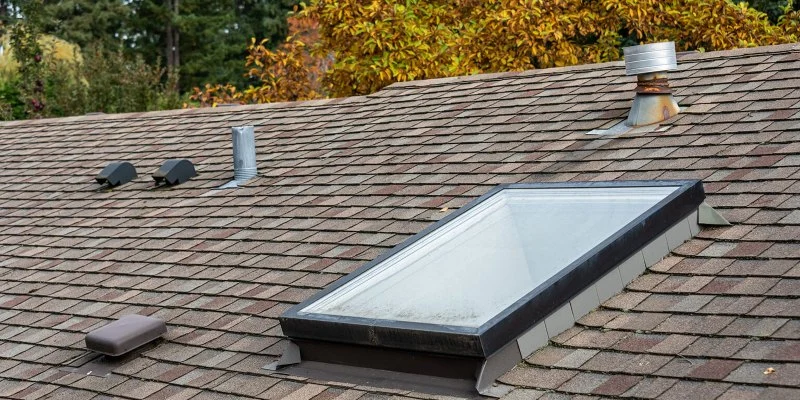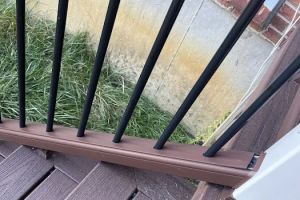
- 1. Why Pests Enter Through Roof Vents
- 2. Types of Pests That Enter Through Roof Vents
- 3. Preventive Measures for Keeping Pests Out of Roof Vents
- 4. How to Identify Pests in Your Roof Vent
- 5. Treating Pest Infestations in Roof Vents
- 6. When to Call Professionals for Pest Intrusions
- 7. Where to Find Pest Control Products
1. Why Pests Enter Through Roof Vents
Roof vents are essential for maintaining proper airflow in your home, preventing moisture buildup, and regulating temperature in the attic. However, they also serve as an easy entry point for pests. Pests are naturally drawn to the warmth, shelter, and food sources that can often be found in attics, making roof vents a prime access point.
Roof vents typically have screens or openings that allow air to circulate freely, but these same openings can be exploited by rodents, insects, and other pests if they are not properly sealed. These creatures are attracted to the warmth of your attic, especially during colder months, and they often use roof vents as a way to invade your home. It’s important to understand how pests gain access through roof vents so you can take action to prevent it.
2. Types of Pests That Enter Through Roof Vents
Several types of pests are known to enter homes through roof vents. Here are some of the most common culprits:

Greenix Pest Control
LexingtonFayette CountyKentucky
271 W Short St Suite 411, Lexington, KY 40507, USA
2.1 Rodents
Rodents, such as rats and squirrels, are notorious for entering homes through roof vents. They can easily squeeze through small gaps and use the vent as a pathway into your attic. Once inside, they may cause significant damage by chewing on wires, insulation, and structural components. They are also a health risk, as they can carry diseases and spread bacteria.
2.2 Insects
Insects like ants, termites, and carpenter bees may also use roof vents as an entry point. These pests can create nests inside the attic, causing damage to wood and insulation. Termites, in particular, are dangerous because they can cause significant structural damage to your home.
2.3 Birds
Birds, especially pigeons and starlings, can also be a problem if they find a way into your roof vents. Once inside, they may build nests, creating blockages in the vent and causing further issues with airflow and moisture buildup.
3. Preventive Measures for Keeping Pests Out of Roof Vents
The best way to deal with pests entering through roof vents is to prevent them from gaining access in the first place. Here are some effective preventive measures:
3.1 Install Proper Vent Screens
Ensure that all roof vents are equipped with sturdy screens that can prevent pests from entering. These screens should be small enough to block rodents, insects, and birds, while still allowing for proper airflow. If your vents are missing screens or have damaged ones, it’s crucial to replace them as soon as possible.
3.2 Seal Gaps and Cracks
Check around the edges of your roof vents for any gaps or cracks that could provide an entry point for pests. Use caulk or weatherproof sealant to fill in any holes, making it more difficult for pests to squeeze through.
3.3 Install Vent Covers
Consider installing vent covers or mesh barriers over the roof vents to block larger animals from entering. These covers can also protect against debris and leaves that could clog the vent, allowing pests to find their way in.
3.4 Trim Overhanging Branches
If there are trees or shrubs near your roof, trim back any branches that may be close to the vents. Overhanging branches can provide rodents and other pests with an easy path to your roof, where they may find entry points into your vents.
4. How to Identify Pests in Your Roof Vent
If you suspect that pests are using your roof vents to enter your home, there are several signs to look out for:
4.1 Unusual Noises
One of the first signs that pests have entered through roof vents is hearing strange noises in your attic, such as scratching, scurrying, or chirping. These sounds may indicate the presence of rodents or birds.
4.2 Visible Nests or Droppings
Inspect your attic and roof vents for visible nests or droppings, which are common signs of pests. Rodent droppings, in particular, are a sign that rodents have been inside your attic, while bird droppings may indicate a bird nest nearby.
4.3 Damaged Insulation or Wiring
Pests, especially rodents, can cause damage to insulation, wires, and even wooden beams in the attic. If you notice chewed-up insulation or wiring, it's a clear sign that pests are active in the area.
5. Treating Pest Infestations in Roof Vents
If you discover that pests have already infiltrated your roof vents, it’s essential to take action immediately to prevent further damage and ensure your home remains pest-free. Here are some steps to follow:
5.1 Set Traps
For rodents, setting traps around the attic or roof vent area can help capture and remove them. Use humane traps to capture them alive, or opt for traditional snap traps. Be sure to place traps in areas where pests are most active.
5.2 Use Pest Repellents
Pest repellents, such as ultrasonic devices or natural repellents like peppermint oil, can help deter rodents and insects from entering your roof vents. Be sure to use these products according to the manufacturer’s instructions for maximum effectiveness.
5.3 Seal Off the Entry Points
After addressing the current infestation, take steps to seal off any potential entry points. This may include repairing holes in the roof, sealing gaps around vents, and adding mesh covers to prevent future intrusions.
6. When to Call Professionals for Pest Intrusions
While DIY methods can be effective for minor infestations, more significant problems may require professional intervention. If you notice large-scale damage, an overwhelming pest presence, or difficulty identifying the source of the infestation, it’s best to contact a pest control expert.
Professionals have the experience and tools to quickly assess the situation, identify the type of pests involved, and implement effective solutions. They can also provide long-term prevention strategies to ensure your roof vents remain pest-free.
7. Where to Find Pest Control Products
If you're looking for the right pest control solutions, visit PestControlHub for a range of products that can help keep your home safe from pests. Whether you need traps, repellents, or vent covers, we offer high-quality solutions to address all your pest control needs.








 Wildlife Resolutions4.0 (443 reviews)
Wildlife Resolutions4.0 (443 reviews) Pest Marshals of Toledo5.0 (2 reviews)
Pest Marshals of Toledo5.0 (2 reviews) LS Rodent Proofing & Pest Control Service5.0 (4 reviews)
LS Rodent Proofing & Pest Control Service5.0 (4 reviews) Best Termite & Pest Control4.0 (16 reviews)
Best Termite & Pest Control4.0 (16 reviews) Varment Guard Wildlife Services5.0 (28 reviews)
Varment Guard Wildlife Services5.0 (28 reviews) Pestban Inc4.0 (394 reviews)
Pestban Inc4.0 (394 reviews) How to Use Monitors to Detect Pest Entry: A Comprehensive Guide
How to Use Monitors to Detect Pest Entry: A Comprehensive Guide How to Predict Which Pests Will Invade Next – Smart Pest Forecasting for the U.S.
How to Predict Which Pests Will Invade Next – Smart Pest Forecasting for the U.S. How to Conduct a Pest Risk Assessment at Home – Expert Guide
How to Conduct a Pest Risk Assessment at Home – Expert Guide How to Block Pest Entry Around Deck Joists: Effective Solutions
How to Block Pest Entry Around Deck Joists: Effective Solutions How to Safely Use Fumigation Methods: A Comprehensive Guide for Homeowners
How to Safely Use Fumigation Methods: A Comprehensive Guide for Homeowners Why Pests Are More Active After Rain: Understanding the Link Between Weather and Pest Behavior
Why Pests Are More Active After Rain: Understanding the Link Between Weather and Pest Behavior